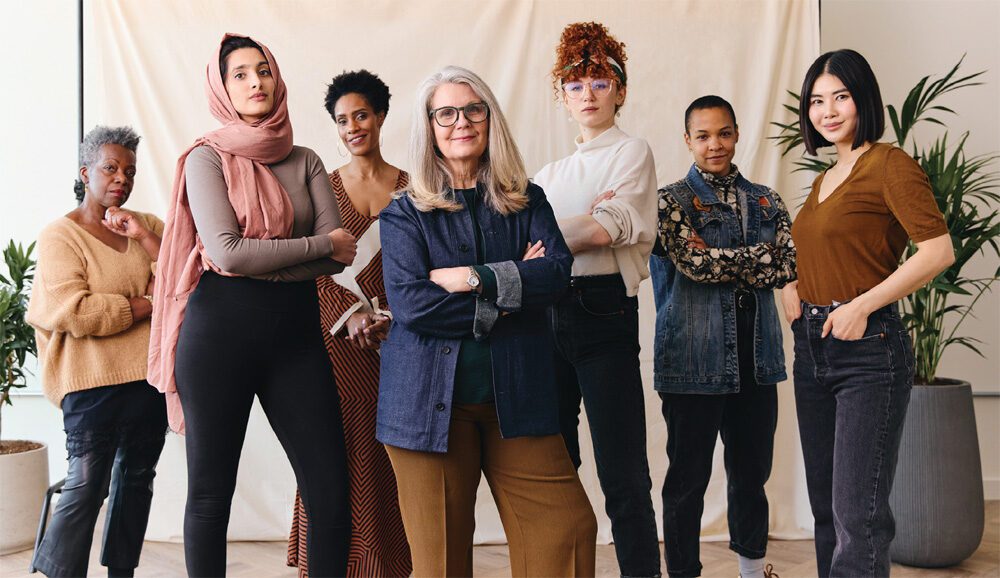Couple spiralling rent, utility and childcare expenses with gender pay gaps, period poverty and the increasing threat of homelessness, and women are firmly in the eye of the cost of living storm.
The impacts of a crisis are rarely gender neutral, and the current price pinch is no exception. As the highest inflation in 30 years rocks the country and the Australian Bureau of Statistics (ABS) records 24 per cent jumps on essentials, few are immune. Faring worst are women – often employed in part-time, lower paid, harder-hit sectors – and these rises, pitted against historically lower wages, are battering every aspect of life.
The economic fallout is intensifying pre-existing inequalities, with average female earnings of 87 cents per men’s $1, making them $253.50 worse off every week and putting inflated price tags out of reach. The pay divide places a ‘handbrake on women’s ability to make ends meet,’ says Mary Wooldridge, director of the Workplace Gender Equality Agency, while widespread wage stagnation amid the crunch exacerbates the problem.
The demands of being the primary, unpaid carer to children, and in some cases, elderly parents, has long hampered female earning potential. Women make up 69 per cent of all part-time employees across the country, finds the Australian Housing and Urban Research Institute. New mothers who planned to stay at home now have little choice but to return to work, adding childcare costs – as much as $200 a day – to already exhausted budgets, while single mums, who make up 80 per cent of Australia’s single parent families, struggle to stay afloat on a solo wage.
Chatswood-based single mother-of-one, Georgia*, tells North Shore Living that stay-at-home mums are a dying breed amidst the cost crisis. “The best job in the world is becoming extinct,” says Ms Lewis, who went back to work when her son Theo was just six months old. “I had planned to take at least a year or two off from my job in human resoures to look after Theo thanks to family support, but when our rent rose by $160 a month and groceries started going up so much, I realised that was no longer an option,” she adds.
Rents on a skyscraper scale are fast becoming the norm across Sydney. The average Lower North Shore rent rose by an eye-watering 44.5 per cent between 2022-23, up $338 to $1,097 a week, finds theABS, second only to the gilded Eastern Suburbs, forcing many renters, particularly in areas such as Willoughby and Lane Cove, to head to postcodes new.

For a woman on the average female weekly pay of $1,697, more than 40 per cent of that income will now go on rent, and, as for buying, it’s a seven-year steep climb to reach the golden deposit at 30 per cent savings a week – a mountain for most. NSW Minister for Women, Jodie Harrison, tells North Shore Living: “Women on average are paid 11.8 per cent less than men, so when prices rise, a larger proportion is spent on essential items, reducing disposable income and savings and negatively impacting immediate and long-term financial security and quality of life.”
Against the backdrop of these astronomical asking prices, the threat of homelessness looms. Australia’s fastest growing homeless demographic is now women aged over 55, Housing for the Aged Action Group reveals, with 240,000 homeless women and a further 165,000 aged 45 to 54 at risk due to sky-high costs, job losses or relationship breakdowns.
“The best job in the world is becoming extinct.”
Chatswood mother-of-one, Georgia
Kevin Kingsbeer, program manager at national homelessness charity Mission Australia (MA), tells North Shore Living: “Twenty years ago, it was mainly older males with alcohol addictions who were accessing our services, but now we are seeing a far wider cohort. There’s an acute need for housing and homelessness services, but affordable developments remain scarce due to lack of land and a sense of community uncertainty,” he adds.

Amid today’s economic meltdown, many female victims of domestic violence cannot afford to leave, giving rise to the sobering reality that safety is unaffordable. Government- funded rent supplements for up to three years may allow access to transitional housing, but permanent, affordable and safe housing is what is truly needed, advocates say. The NSW Government says it is committed to providing targeted cost-of-living support, such as electricity subsidies and annual preschool fee relief of up to $4,220. The $224 million ‘Essential housing package’ aims to deliver affordable housing, while tax savings for healthcare workers will be boosted. Minister Harrison says the government is working to address the gender pay gap by abolishing public sector wage caps, as in NSW, women make up 66 per cent of this workforce. Women beyond working age are also at risk of ‘material deprivation’ as longer life expectancies clash with lower median superannuation balances – as much as 23 per cent less than men, finds the Australian Housing and Urban Research Institute – due to careers cleaved by childcare.
“Women on average are paid 11.8 per cent less than men, so, when prices rise, a larger proportion is spent on essential items.” NSW Minister for Women, Jodie Harrison

NSW Minister for Women Jodie Harrison
This excess of economic stress is rippling into health, with female mental health body, Liptember Foundation, revealing that more than half of Australian women are now depressed, but just 31 per cent – up from 22 a year ago – seek help. “Financial pressures are worsening women’s mental health, yet a growing number now can’t afford to seek the help they so desperately need,” says Liptember Founder, Luke Morris, calling it a ‘mental health paradox.’ Mature women named cost pressures as the culprit, while young women blamed the disposable income drought, Liptember reveals.
Uniquely female health struggles such as polycystic ovarian syndrome also made women 50 per cent more likely to suffer from depression or anxiety, lowering their earning power, and, despite GST being removed from menstrual products in 2019, they are not immune to rises. Average price tags jumped from $8.50 to an August 2023 peak of $11.10 across major Australian supermarkets, finds money saving app, WiseList. Over a lifetime, more than $10,000 will be spent on products – excluding pain management – as female equality charity, Plan International, warns that six in 10 women are now struggling with period poverty.
With no sign of ballooning costs deflating, focusing on the meaty issues – housing, pay and health – will go some way to navigating the crisis. The delivery of long-term, safe and affordable housing for women, alongside prioritising those escaping domestic family violence, is key. As is the willingness of employers to enhance female career development and earnings by committing to childcare, mental health and menopause strategies that enable women. As Liptember’s Luke Morris, says: “There’s so much more that needs to be done.”
* Full name has not been used upon request
By Catherine Lewis








